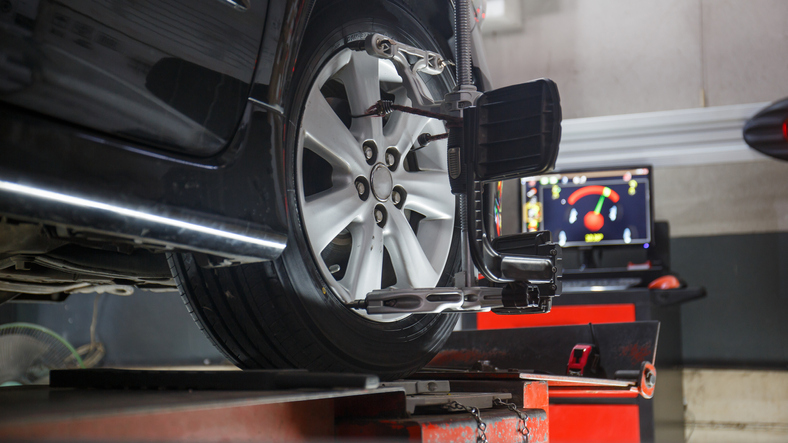The secret to everything is balance. Who wants a car that is out of balance to start driving erratically, after all? because a car’s body never touches the earth. Your car’s wheels play a key role in maintaining balance when it is moving along the road. Proper tyre pressure and balancing are vital since an imbalanced wheel can cause confusion, trembling, and a decrease in mileage.
Your tyres, however, are likely to keep coming off the ball for months due to the uneven and ongoing wear. In this circumstance, it is essential to equalise them out. And employing tyre weights is the best way to go about it.
Wheel weights are typically employed in two different ways: as adhesive weights or clip-on weights. The “correct” wheel weight varies depending on the wheel application and the technician’s preference. There are numerous materials available, both for tape and adhesive wheel weights.
Wheel-balancing apparatus comes in three varieties: dynamic balancers, static balancers, and “bubble” balancers. Dynamic wheel balancers are most frequently seen in tyre service centres that perform significant volumes of work.
However, matched mounting can still result in beneficial outcomes; road force balancing is the most dependable method to deal with these problems. The best way to avoid blowouts and instead experience force variation vibrations is to use one of the tyre services available: road force balancing, also known as ride matching.
The extreme interior and outside corners of the wheel would be the ideal locations. The further apart the weights are, the more “couple” stress, or the edge wobble of a rolling tyre, can be countered.Because the weight must be behind the spokes, we have eliminated the outside and another two to three inches.
The outside and inside rims of the wheel are then equipped with balance weights. Although dynamic balancing is theoretically superior to static balance due to the measurement and correction of both static and dynamic imbalances, its efficacy is contested because of the elastic nature of the rubber.
Putting the wheel balancer in place
Although it may seem like a no-brainer place to begin, you’d be surprised at how frequently this is forgotten or even disregarded. This is also the most frequent reason for calls to inspect “malfunctioning” wheel balancers. Wheel balancers need three dimensions to accurately measure the wheel imbalance. 1. The distance (d) between the inner edges of the wheel and the tyre balancer cabinet
- the actual wheel’s diameter (di).
- The wheel’s width (Lr)
These measurements are crucial for the tyre balancer computer to understand the relationship between the outside and inside edges of the wheel. the face plate of the wheel balancer, as well as the distance between the weight placement shaft and the rim lip or edge. The wheel will not be properly balanced if you do not enter all three measures into the wheel balancer. This could lead to issues with “chasing weights” or “comebacks.” Data entry by hand using buttons or dials will be possible on all devices. For measuring the length and circumference of the wheels, the majority of more recent automated tyre compensators have a measurement arm that you may draw out.
Timing of weight addition
Thus, the load reading is fixed, and the tyre weight installed during the last balancing cycle is placed as close to the top centre line (12 o’clock) as possible. Here, the weight is removed, and a new one is fitted to the frame to add the appropriate amount of weight.
Timing of Weight loss
Thus, the load reading is fixed, and the tyre weight installed during the last balancing cycle is situated as close as possible to the top, exactly in the middle (6 o’clock).
This is when the weight is removed and a new one is fitted to match the appropriate quantity, removing the appropriate amount of weight in the process.
Why do you require wheel weights?
Wheel weights, as their name implies, are parts used to balance wheels composed of malleable metals like Wheel weights are attached to your tyre to balance out the aggregate unbalance.Using wheel weights, the overall weight distribution of your wheels, and any imbalances Because balanced tyres improve overall comfort and safety while extending tyre life and saving fuel.
Various Tyre Weights
The provision of balance is the main goal of wheel weights. But there are two main ways to accomplish this: The first method is to use clip-on weights.The alternative is to use an adhesive weight.
Weights with Clips
As implied by their title, clip-on tyre weights are attached to any area of your rim. Adaptive Wheel You can add weights to the inside and outside of your rim. A Clip-On tyre weight placed in a certain spot increases the mass of your tyre.
The following are some of the advantages of using clip-on weights:
They are easier to attach and detach.
To achieve balance, fewer weights are required.
No other part of the wheel is hampered by it.
The conclusion
One of the top three services offered by tyre retailers is wheel balancing. Most tyre professionals are aware of the value of balancing and are able to accomplish it professionally. Balancing, on the other hand, necessitates knowledge and experience in order to fit perfectly in tyre weights.In the right hands, a balanced steering wheel eliminates reduced mileage, wobbling, and steering vibrations.



